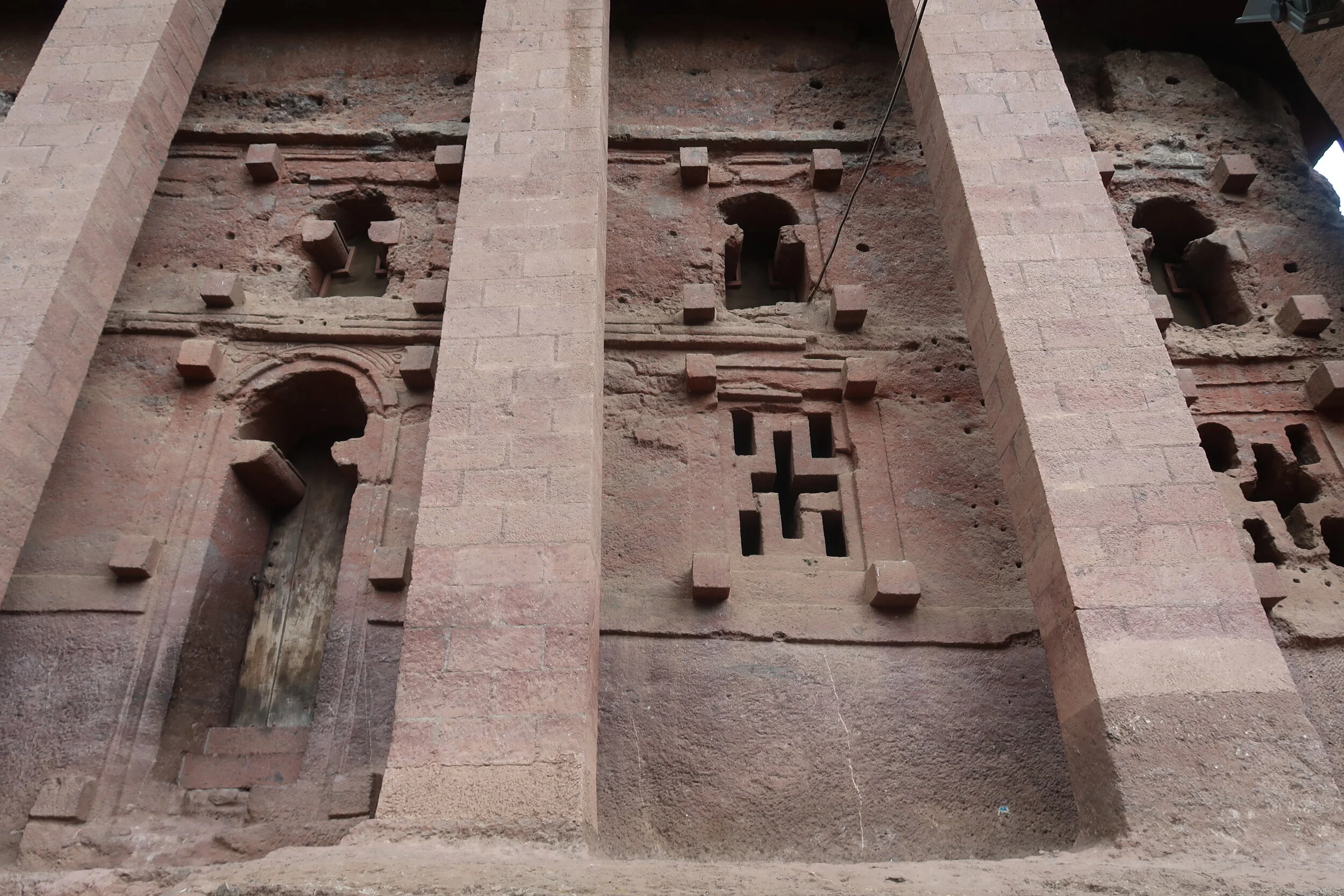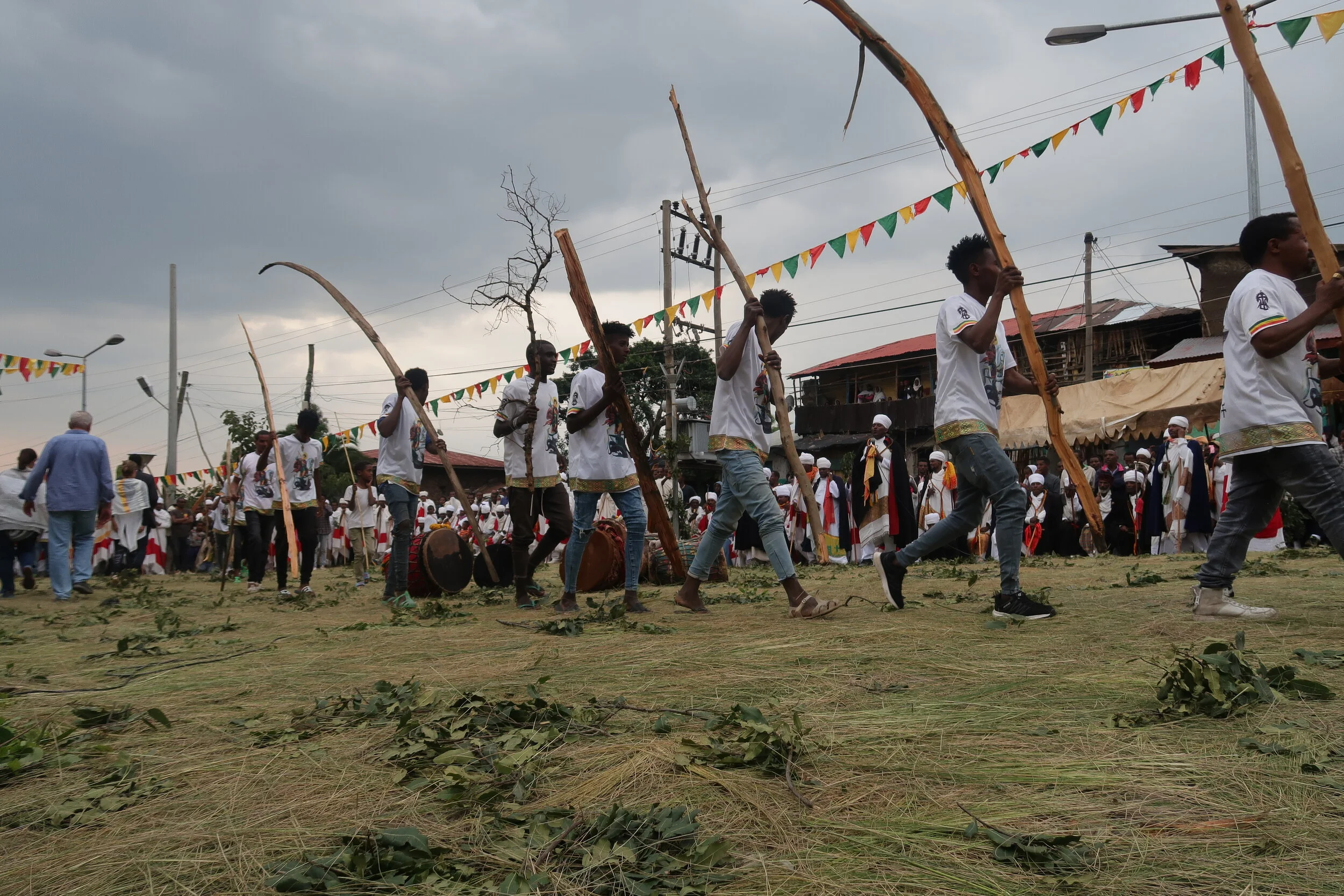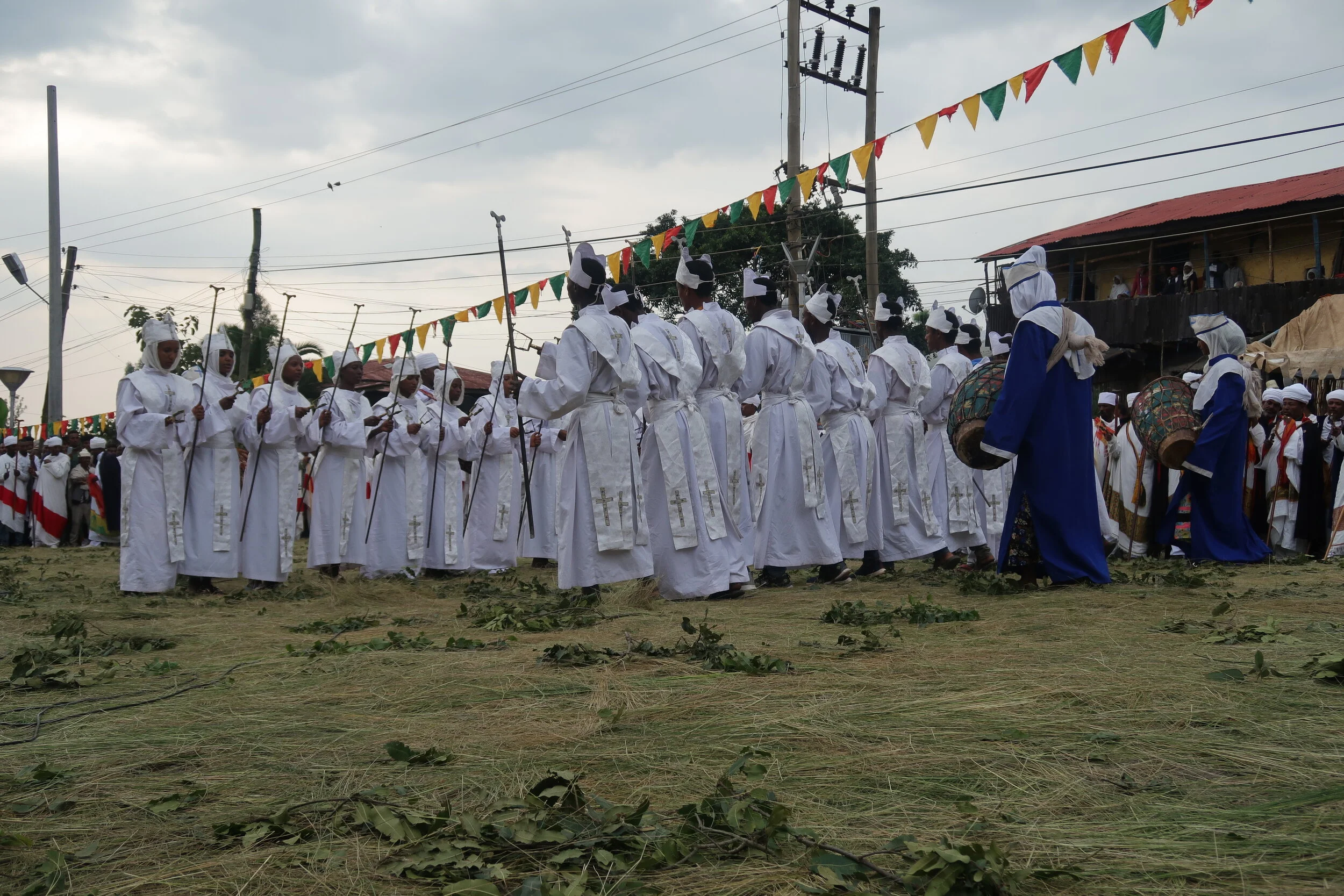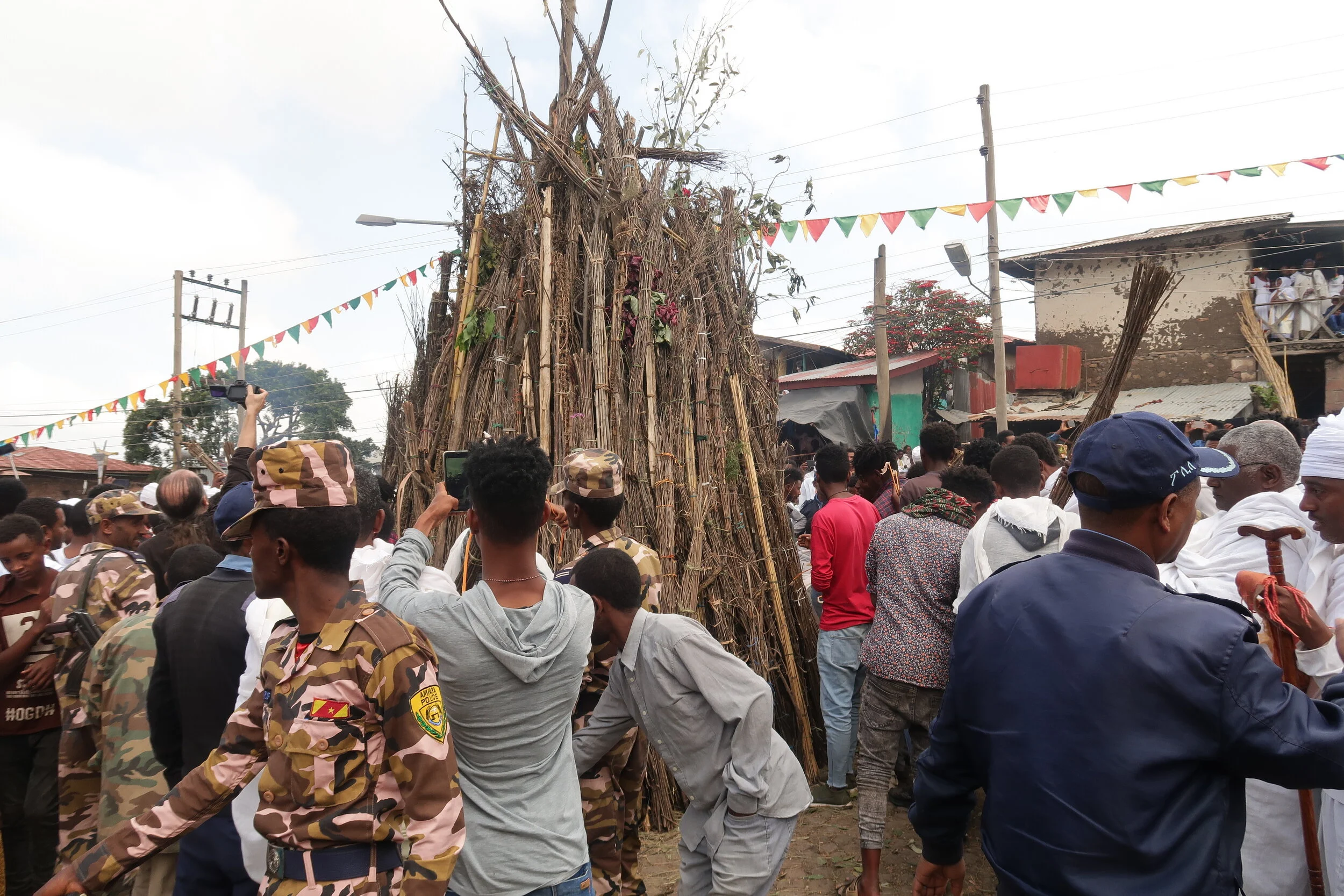They Observe... the Meskel Festival in Lalibela
The Meskel Festival is an annual celebration in September commemorating the discovery of the True Cross by the Roman Empress Helena in the 4th Century. The big celebration happens in the main square of Ethiopian cities where people gather branches and create the largest bonfire they can.
Lalibela
Lalibela is a town in the Amhara region of northern Ethiopia and considered one of the holiest cities - a pilgrimage location for people to come see rock-hewn churches: eleven monolithic churches carved out of rock. Lalibela translates to “honey eater” and we also enjoyed some amazing honey wine in this city, called Tej.
The churches themselves are attributed to King Lalibela’s reign in the 11th and 12th century. His name is Lalibela because his mother was surrounded by bees when she gave birth and thus inspired his name. Our guide shared that Lalibela’s elder half-sister put poison in his wine to kill him for the throne. King Lalibela was a priest and his student drank the wine first and died. The King was disappointed in his sister, but decided to drink the poison anyways since it was originally meant for him. Miraculously, he didn’t die but ended up sleeping for three days instead.
Biete Medhane Alem
The “House of the Saviour of the World” is considered the biggest monolithic church in the world. There are 72 pillars exemplifying the 72 disciples. It is home to a 7kg gold Lalibela Cross which worshipers come to be blessed by.
Other Photos of the Churches
Meskel Festival
The festival was on 27-28 September this year and is best described as a large orthodox mass ceremony held in the main square of the town. Foreign tourists are considered esteem guests of the event and we were moved to the very front of the celebrations, encouraged to take photos and videos. Tourism brings significant money into the town and they want us to have the very best time. A number of ceremonies began involving prayers, dancing and music. We saw young children in religious clothing performing and priests dressed in beautiful outfits.
As the mass ceremonies were held, people continued to bring branches to the front and they were attached to make the bonfire even larger. The story goes that Queen Helena had a revelation in a dream that if she made a bonfire, the smoke would show her where the true cross was buried. She had the people of Jerusalem bring wood, add frankincense and then lite the fire. Smoke rose high up in the sky and returned to the ground exactly in the spot where the Cross was buried.


















































